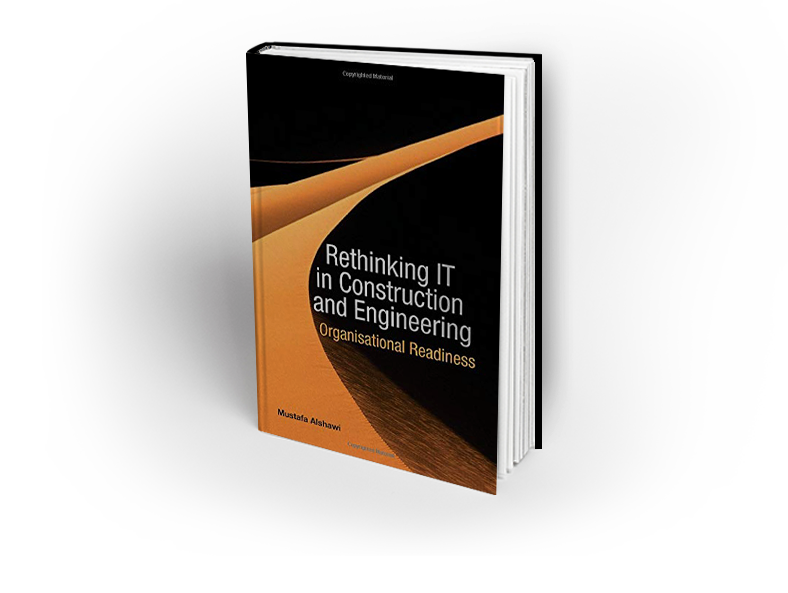Preface
There have been significant advances in the development and application of Information Technology (IT), both in hardware and software. Such advances have clearly influenced the way which organisations have integrated IT into their business environment. It is widely accepted that IT is becoming a key element of any organisational infrastructure. Indeed, many like to think that the level of an organisations’ reliance on IT in the 21st century is similar to the reliance on electricity in the previous century where it is not expected for an organisation to function without electricity. For example, networks, Internet, e-mail and office automation are seen as standard applications for “reasonable” size organisations. For small businesses, standalone applications such as e-mail, presentations and report writing are seen to be essential components for running any business. However, for larger organisations, the picture is more complex where IT infrastructure plays a key role in supporting core business functions. In this context, IT is being increasingly used to support business strategies as an enabler to leverage its potential to gain a competitive advantage and therefore new markets/clients.
However, there is ample evidence that Information Systems (IS)/IT have failed to bring about a competitive advantage to organisations in spite of the large investments over the past decade. A large percentage of IS/IT systems have failed to achieve their intended business objectives. Previous studies in the area of “IS/IT failure” have shown that 80 – 90% of IT investments did not meet their performance objectives. Such projects were abandoned, significantly redirected, or even worse, they were “kept alive” in spite of their failure. The cost of funding such projects and the missed opportunities of not benefiting from their intended capabilities constituted a tremendous loss for organisations. This dissolution in the strategic benefits of IS/IT is currently forcing many organisations not to invest in IT for any competitive advantage but for the reasons of bringing efficiency and effectiveness to business processes.
The main attributes of the high percentage of systems failure are rarely purely technical in origin. They are more related to the organisational “soft issues” which underpin the capability of the organisation to successfully absorb IS/IT into its work practices. IT is still, in many cases, being considered by the management of organisations as a cost cutting tool (owned and managed by their IT departments). This “Technology push” alone, even though to some extent is still dominating in many industries like construction and engineering, will not harness the full business potential of IS/IT and thus unable to lead to competitive advantage. Although the implementation of a few advanced IT applications might bring about “first comer” advantage to an organisation, this will not last long as it can be easily copied by competitors. It is the innovation in process improvement and management, along with IT as an enabler, that is the only mechanism to ensure sustainable competitive advantage. This requires an organisation to be in a state of readiness which will give it the capability to positively absorb IS/IT enabled innovation and business improvement into its work practices.
The competencies that an organisation needs to develop in order to acquire the capability to strategically benefit from IS/IT, prior to IS/IT investment, falls under four main elements; people, process, work environment and IT infrastructure. The first two elements are the key to change and improvement while the other two elements are enablers without which the first two elements can not be sustained. The “acceptable” level of IS/IT, that can be successfully utilised in an organisation i.e. ensuring its business benefits are realised, therefore depends on assessing a range of critical issues needed to ensure a balance between the organisation’s readiness (mainly factors required to adapt to the proposed change) against the level and complexity of the proposed IT (which often hinders or limit success). This balance often includes many issues such as: capital expenditure, resource availability, organisation’s maturity and readiness, culture and vision, and available IS/IT skills.
In order for an organisation to achieve the required level of capability to address IS/IT based innovation and continuous improvement, it has to:
- Create an innovative work environment. This should focus on developing and sustaining a highly skilled and flexible workforce which will have the skills and the competencies to continuously introduce improvement through better and more streamlined business processes enabled by advanced IT. In this context, organisational learning and knowledge management become a necessity for organisations to sustain business improvements and competitive advantage out of their IS/IT investments.
- Achieve effective alignment between business strategies and IS/IT strategies. The focus should be on improving the organisation’s efficiency by directly integrating IS/IT with the corporate, strategic and operational needs. This ensures IS/IT resources are ‘in line’ with business imperatives.
In order to develop an IS/IT capability, an organisation needs to rethink its processes, structure and work environment. This necessitates the development of a “forward looking” management tool which will enable managers to:
- Measure their current capabilities in the relevant areas i.e. those that affect the development of the required IS/IT capabilities
- Predict the required level of change and resources to develop the target capabilities i.e. identifying the organisation’s “readiness gap” for developing and adopting specific IS/IT capabilities.
This book focuses on the organisational soft issues that hinder the successful implementation of IS/IT in an attempt to raise the level of understanding of these issues and to highlight how best to deal with such issues through IS/IT readiness measurement tools. Real case studies are used, throughout the book, to illustrate various concepts and provide the reader with a realistic and practical picture of reality.
The content of the book is structured in three main parts:
PART 1: Elements of IS/IT Success &Measurement in Organisations
This part (Chapter 1-4) of the book sets the scene by clearly explaining the trends in the development, management and success measurement of IS/IT projects along with their uptake and impact on business. It then examines the technology impact on the construction and engineering industry. Chapter 1 addresses the pace of change in hardware and software along with the implementation patterns and problems that this industry has gone through over the past decade in order to improve its performance and efficiency. It also discusses the evolving role of IS/IT management in organisations and relates that to the success of IS/IT. It also covers examples of successful applications of IS/IT in the Construction and Engineering industry. Chapter 2 focuses on the relationship between the implementation of IS/IT and the dynamics of businesses within organisations. It clearly explains the relationship between IS/IT projects success and the capability of organisations to successfully absorb the new systems within their work practices. The focus of the discussion is on the four organisational elements of success; people, process, work environment and IT infrastructure. Chapter 3 is mainly concerned with IS success measurement models. It focuses on product based measurement approaches and classifies them into two categories; hard and soft. Chapter 4 illustrates the context of this book in two detailed case studies. The Chapter emphasises the role of organisational soft issues and their impact on the success or failure of IS/IT projects.
PART 2: Enablers: Learning Organisations & Strategies Alignment
This part (Chapter 5-7) of the book addresses the organisational enablers which are not only necessary to foster IS/IT capabilities in organisations but also ensures sustainable IS/IT competitive advantage. The focus of this part is on two issues; a) organisational learning/knowledge management as being the catalyst for knowledge sharing and capacity building and b) integrating business and IS/IT strategies. Chapter 5 explains and discusses the concept of learning organisation and the role of knowledge management as a tool to achieve continuous improvement. The concept of learning is linked to the resource-based models in an attempt to explain how such an environment can be achieved. Chapter 6 addresses the importance of developing holistic implementation strategies for developing learning environments and uses knowledge management as a case. A three layer holistic implementation model is presented which covers the entire knowledge management cycle. Chapter 7 is concerned with the alignment of IS/IT strategies with business strategy. It provides backgrounds to the IS, IT and business strategies followed by a high-level implementation framework. The Chapter ends with a focus on IT training, as a key concept to building capability.
PART 3: Improvement Gaps and Tools: Maturity & Readiness of Organisations
This part (Chapters 8-10) focuses on building IS/IT capabilities of organisations and measuring their readiness gap prior to IS/IT investments. Maturity concepts and models are used to categorise the organisational elements of success (process, people, work environment, IT infrastructure) in several levels of maturity which are then used to identify the current and required level of organisational readiness in the 4 elements of success. An IS/IT readiness model is proposed to address the latter. This concept is then discussed within the IS lifecycle where a new stage “Readiness Gap” is proposed to the IS lifecycle before the development and implementation phase starts. Chapter 8 is concerned with maturity and maturity models. It uses a number of application examples to illustrate the concept. In addition, this chapter briefly covers the various process improvement models in the software industry where concepts are adopted in the proposed readiness models. Chapter 9 addresses the definition of opportunity and readiness gap and attempts to modify the IS lifecycle by adding a new stage to measure the IS/IT capability of organisations prior to the commencement of the development and implementation phase. The Chapter ends with a detailed IT training strategy as an example of the preparation of IS/IT skills in organisations. Chapter 10 presents the proposed IS/IT readiness model and utilises the full case studies, explained in Chapter 4, to illustrate the implementation of the model.
(*) Prof. Mustafa Alshawi is the Director of the Research Institute for the Built & Human Environment at the School of the Built Environment at the University of Salford, UK
Download book flyer as PDF file flyer-new








Comment here